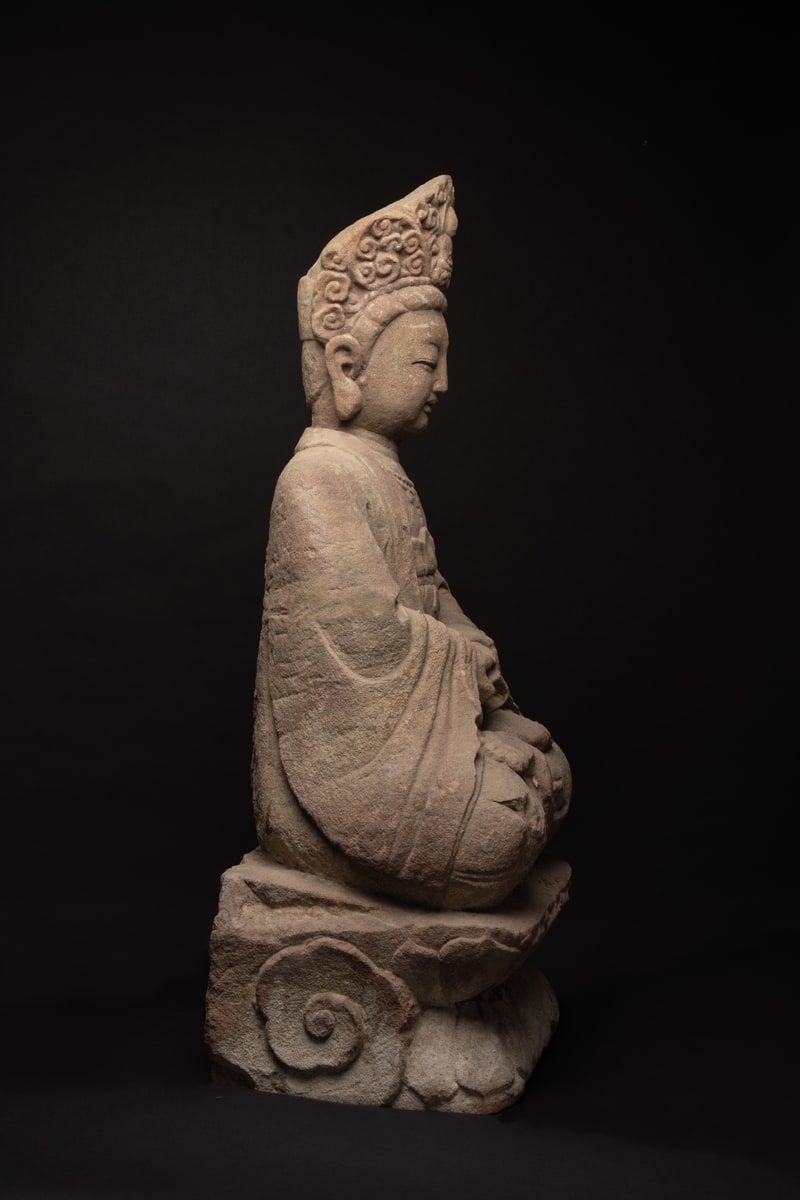Ming Sandstone Seated Guanyin, 1368 CE - 1644 CE
Sandstone
height 88.9 cm
height 35 in
height 35 in
RL.4325
Further images
This is a red sandstone sculpture of the Bodhisattva Guanyin from the Ming Dynasty. Here, Guanyin appears meditative and relaxed, seated in lotus posture on a pedestal. Wearing a crown...
This is a red sandstone sculpture of the Bodhisattva Guanyin from the Ming Dynasty. Here, Guanyin appears meditative and relaxed, seated in lotus posture on a pedestal. Wearing a crown of Buddhas with his master Amitabha at the centre, he places both hands on his lap, forming the Dhyana mudra. Simplistic keyura hangs from his chest, highlighting his elegant robes and the three folds on his neck. The sculpture’s square-ish face and the use of red sandstone hints at the possibility that it was made in Sichuan, Southwestern China, where red sandstone are abundant.
As the Bodhisattva of Mercy and Compassion, Guanyin has become extremely popular among the Chinese since his introduction to the region. To the mundane, Guanyin represents unconditional love and kindness, virtues that are desperately needed for this world. It is said that when Guanyin was ascending into the spirit realm he heard the cries of suffering humans and chose to return to this world. Thus, Guanyin makes helping others reach enlightenment his eternal mission.
Approaching the later period of Ming Dynasty, there was a gradual stylistic change. Departing from the slender and slim physique dominating the Yongle and Xuande era, late Ming sculptures have a relatively bigger head, a broader chest and a thicker torso.
As the Bodhisattva of Mercy and Compassion, Guanyin has become extremely popular among the Chinese since his introduction to the region. To the mundane, Guanyin represents unconditional love and kindness, virtues that are desperately needed for this world. It is said that when Guanyin was ascending into the spirit realm he heard the cries of suffering humans and chose to return to this world. Thus, Guanyin makes helping others reach enlightenment his eternal mission.
Approaching the later period of Ming Dynasty, there was a gradual stylistic change. Departing from the slender and slim physique dominating the Yongle and Xuande era, late Ming sculptures have a relatively bigger head, a broader chest and a thicker torso.











